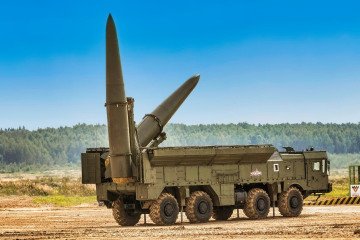- Category
- War in Ukraine
The Sea Drone That Took Down Two Russian Fighter Jets—Ukraine’s Magura Makes History Again

In a historic military operation, Ukraine once again demonstrated how modern technology and unconventional tactics can defeat an adversary that appears superior “on paper. “
In early May, Ukrainian forces carried out an operation almost too extraordinary to believe at first glance: they successfully downed a Russian Su-30 fighter jet. But this wasn’t an ordinary takedown—it was accomplished using a naval drone in the Black Sea. Remarkably, the drone was unmanned, and the entire mission was conducted remotely. Air-to-air missiles were launched from the sea-based drone to strike the aircraft.
This marked a first in military history. And in true record-breaking fashion, Ukraine’s forces repeated the feat later that same day, downing a second Su-30. One crew was lost; the other managed to eject and evacuate. Each aircraft is valued at up to $50 million, meaning Russia suffered a $100 million loss in a single day.
Magura 7 vs. Su-30
The operation to destroy the Su-30s was carried out in the Black Sea using Ukrainian-developed naval drones, coordinated by Ukraine’s Defense Intelligence (HUR) with support from Ukraine’s Security Service (SBU) and the broader Ukrainian Armed Forces. While earlier naval missions employed Magura 5 drones, this was the first known use of the Magura 7 variant. Due to security concerns, technical specifications remain classified.
For the first time, it was also disclosed that the drones had been armed with AIM-9 Sidewinder air-to-air missiles, equipped with infrared guidance systems. The Sidewinder is a widely used missile, measuring up to 3 meters in length, with a range of 22 miles (35 km) and a 10 kg warhead, while weighing under 90 kg total.
At least three Ukrainian Magura 7 drones were involved in the operation against the Su-30s, though the exact number and other details remain undisclosed.
This kind of operation is unprecedented in the history of combat aviation. Sea drones as a weapons class only began seeing widespread use during the ongoing Russia-Ukraine war in the Black Sea. Their deployment has enabled Kyiv to gain the upper hand over Russia’s much larger naval force. Striking a fighter jet with a missile launched from a naval drone marks a first, not only for drone warfare but for air combat history as a whole.
On the same day, May 2, Ukrainian Magura 7 drones downed a second Su-30, confirming that the operation was not a one-off, but a viable, repeatable combat tactic.
For context: a single naval drone costs several hundred thousand dollars. An AIM-9 Sidewinder missile runs about $300,000. Meanwhile, one Su-30—excluding onboard armaments—costs around $50 million. Factoring in expensive missiles, fuel, and the trained pilot, each aircraft represents tens of millions more in losses.
Sea drones vs. Russian helicopters
While this is the first time Ukraine has destroyed Russian fighter jets, it is far from the first instance of taking down Russian aircraft.
In December 2024, Ukrainian Magura 5 drones used R-73 SeeDragon missiles to shoot down two Russian Mi-8 helicopters. The drone first damaged one helicopter, and when a second arrived to assist, it too was struck. That event also marked a historic first—the destruction of flying targets by naval drones.
The breakthrough lies in how Ukraine’s armed forces transformed a drone originally designed to deliver explosive payloads against naval targets into a versatile combat platform. These drones can now conduct reconnaissance, carry air-to-air missiles to neutralize aerial threats—functioning effectively as maritime air defense—and even serve as launch platforms for other drones targeting ground-based assets.
This evolution in warfare has helped neutralize Russia’s dominance in the Black Sea and enabled Ukraine to resume operations in its maritime ports—an essential step in maintaining exports and sustaining the national economy.

-29a1a43aba23f9bb779a1ac8b98d2121.jpeg)
-c42261175cd1ec4a358bec039722d44f.jpg)
-46f6afa2f66d31ff3df8ea1a8f5524ec.jpg)
-6359eca46c72bde40a90abaaadd6eaa8.png)


-206008aed5f329e86c52788e3e423f23.jpg)